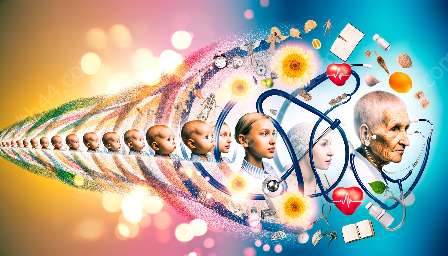The concept of attachment and bonding is deeply rooted in the human experience, shaping our emotional and psychological development across the lifespan. From infancy to old age, the quality of our relationships and connections with others profoundly influences our well-being and health outcomes. This comprehensive topic cluster explores the intricate dynamics of attachment and bonding, delving into the ways they impact individuals' mental and physical health, and how this understanding can inform health education and medical training.
Infancy and Early Childhood: The Foundation of Attachment
Attachment theory, proposed by John Bowlby, emphasizes the significance of the bond between infants and their primary caregivers. This bond, often known as the attachment relationship, lays the groundwork for a child's emotional security and future social interactions. Secure attachments, characterized by sensitive and responsive caregiving, foster a sense of trust and confidence in the world, while insecure attachments can lead to emotional difficulties and behavioral challenges. The quality of attachment in infancy has far-reaching implications for cognitive development, emotional regulation, and interpersonal relationships.
Understanding the dynamics of early attachment is crucial for professionals in the fields of lifespan development, health education, and medical training, providing valuable insights into the factors that contribute to healthy socioemotional development and the consequences of early adverse experiences. By recognizing the impact of early attachment on long-term well-being, practitioners can tailor interventions and support systems to promote secure attachments and address the needs of children and families.
Adolescence and Young Adulthood: Formation and Exploration of Social Bonds
During adolescence and young adulthood, individuals expand their social networks and form new relationships that contribute to their sense of identity and belonging. Peer relationships, romantic partnerships, and mentorships play significant roles in shaping young people's understanding of intimacy, trust, and emotional reciprocity. Attachment experiences in childhood continue to influence these relational patterns, impacting individuals' ability to form and maintain healthy, supportive connections.
In the context of lifespan development, educators and practitioners in health and medical fields are tasked with guiding adolescents and young adults through this critical stage of identity formation and interpersonal exploration. Recognizing the role of attachment dynamics in shaping young people's relational experiences can inform targeted educational programs and interventions aimed at promoting healthy relationship behaviors and addressing mental health challenges commonly associated with attachment-related difficulties.
Adult Development and Aging: Continuity and Adaptation in Attachment Relationships
As individuals progress into adulthood and older age, the significance of attachment and bonding remains vital to their overall well-being. Forming and maintaining supportive relationships, whether with romantic partners, friends, or caregiving networks, contributes to emotional resilience, physical health, and cognitive vitality. At the same time, life transitions, such as parenthood, retirement, and loss, can prompt shifts in attachment dynamics and coping mechanisms.
Professionals specializing in health education and medical training must recognize the multifaceted nature of attachment experiences across the lifespan, acknowledging the diverse challenges and opportunities that arise at different life stages. By integrating knowledge of attachment theory into their practice, they can promote holistic health interventions that address the emotional and social dimensions of well-being, ultimately improving patient outcomes and enhancing the provision of care for individuals at various life stages.
Health Education and Medical Training: Integrating Attachment-Informed Practices
Understanding the intricate interplay between attachment and health outcomes is essential for professionals in the fields of health education and medical training. By incorporating attachment theory into their educational curricula and clinical practice, practitioners can enhance their ability to assess, support, and treat individuals within a context-sensitive framework. From promoting secure parent-child attachments to recognizing the impact of attachment-related trauma on mental health, an attachment-informed approach can significantly improve the quality of care and health education initiatives.
Furthermore, by fostering an understanding of attachment dynamics among healthcare providers, medical educators can cultivate empathetic, patient-centered care that acknowledges the emotional complexities of illness, recovery, and end-of-life experiences. This holistic approach to medical training aligns with the principles of patient-centered care, emphasizing the importance of relational and emotional support alongside traditional medical interventions.
Conclusion: Integrating Attachment and Bonding into Lifespan Development and Healthcare
In conclusion, attachment and bonding play integral roles in shaping individuals' development across the lifespan, influencing their physical, emotional, and relational well-being. Understanding the complexities of attachment dynamics is essential for professionals in fields such as lifespan development, health education, and medical training, as it offers valuable insights into the factors that contribute to healthy socioemotional development and the implications for holistic healthcare provision.
By integrating attachment-informed practices into their work, professionals can foster secure, supportive relationships and promote mental and physical health outcomes that are deeply rooted in the dynamics of attachment and bonding.


